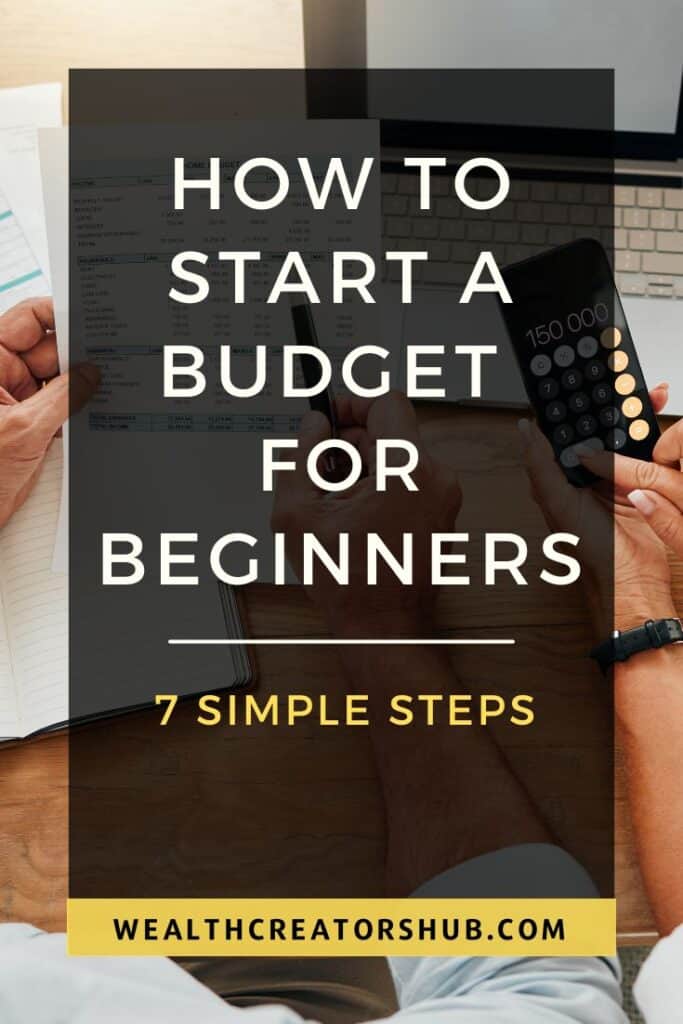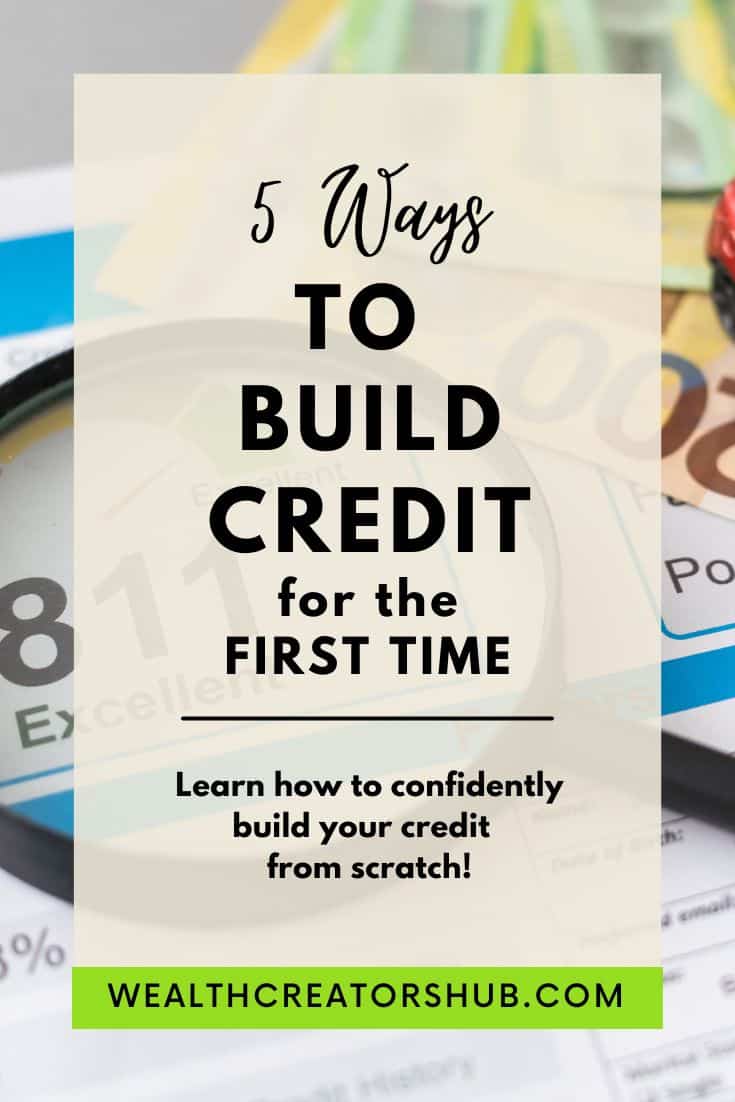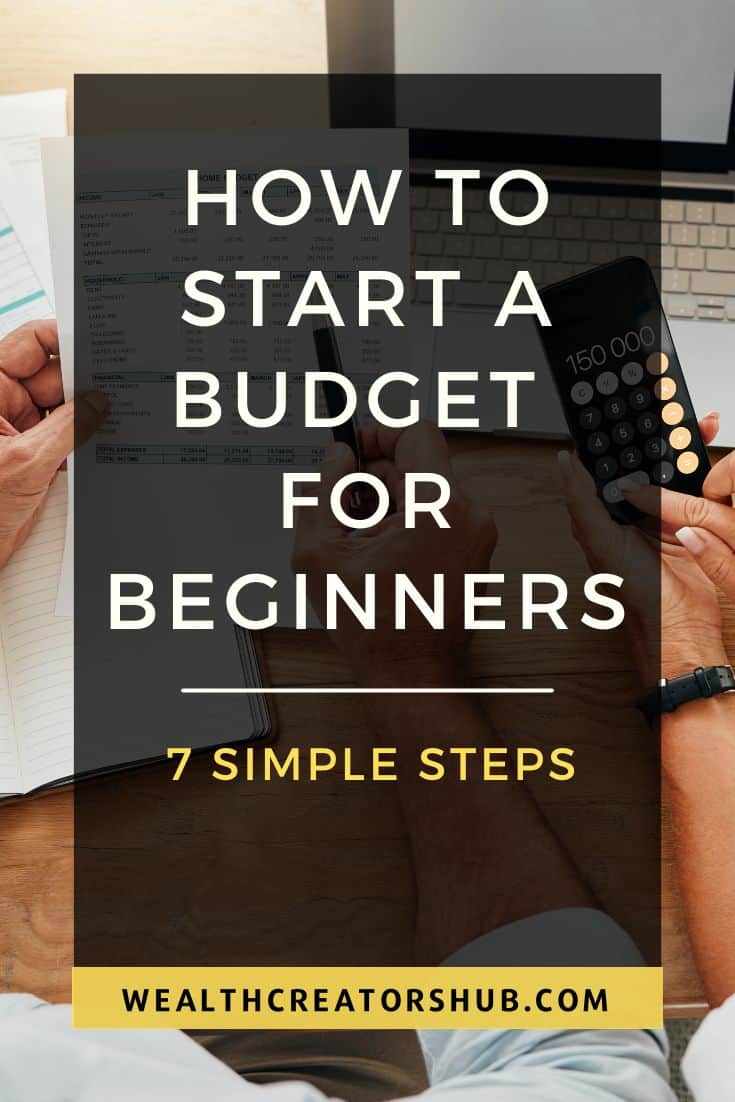Starting a budget may seem intimidating, especially if it’s your first time. Use these 7 simple steps to start a budget today. Whether you are a beginner, or have tried budgeting in the past, and had to quit, following these steps will help you create a functional budget.
But first things first! Your perception and mindset are very crucial to having a working budget. Many people when they first hear about budgeting, think about “restrictions”; this is why having a healthy understanding of budgeting is key.
What has Mindset Got to do with it?
Having a mindset that views budgeting as a ladder to achieving your financial goals, rather than seeing it as a pain to be avoided, is very important.
Budgeting is simply giving every single one of your dollars (money) an assignment. In other words, you are taking charge, and dictating to your money what it should do each time. This is being in control of your money, and ultimately, your financial future!
In other words, you are sending your money on errands, so your mind can be at rest. Your money is being set up to serve you, and not you serving your money.
I say “serving your money” because that is what happens when you lose control of your money, and let the advertisements, or uncurbed desires drive your spending. Through budgeting, you align your money with your goals, thereby putting yourself in check.
At first, it may appear a difficult task, but by the time you have put some systems in place, and practiced this for a few months, you will become more confident and comfortable budgeting.
When you are in control and dictate where your money goes, your confidence will get a boost. You begin to enjoy some satisfaction that is better experienced than described.
Another thing to always have in mind is that your budget should be unique to you. Even if you decide to start with templates, make sure whatever you do realistically represents your finances.
Now, let’s discuss the 7 simple steps you can use to start your own budget today.
How you can start a budget as a beginner
1. Determine your income:
Start by knowing how much money you bring in every month from all sources, including salary, freelance or side gig income, government benefits, or business income.
If you are on a salary, a good place to start is your paystub. This will give you an overview of how much you have after taxes and other deductions have been taken from your salary.
For side hustles, and freelance work, how do you get paid? If you receive payments via an online channel like Paypal, or use apps like Venmo, cash apps etc, check there. Make sure you keep good records of your payments, and collate the numbers to get a sum of your monthly income.
2. List your expenses:
Make a list of all your monthly expenses, including necessities (like rent, utilities, food, transportation) and non-essentials (like entertainment, shopping).
3. Categorize your expenses:
Group similar expenses together, such as housing, food, transportation, entertainment, etc.
4. Track your spending:
Maintain a record of how much you spend each day for a few weeks. This will give you an accurate picture of where your money is going. In other words, write down all of your expenses, including bills, groceries, entertainment, etc., for at least one month.
5. Compare income and expenses:
Compare the amount of money you bring in to the amount you spend. If your expenses are higher than your income, find ways to reduce them. You may not be able to quickly get more income stream, but more likely than not, you can make some adjustments to your spendings.
What expenses can you cut off completely, or at least reduce? Do you have subscriptions or memberships you barely use, but pay for? Could you find less costly alternatives for some of these expenses? For example, can you cut down on eating out, and cook more at home, or take lunch to work more often? There are so many other ways you can cut down your expenses.
6. Set spending limits:
In simple terms, this means you create a budget that allocates money for necessities, savings, and discretionary spending, based on your expenses and income.
Decide how much you can afford to spend on each category of expenses. Be realistic and stick to the limits you set (aka “stick to your budget“). Great discipline is required here, especially if you are a natural “spender”. But believe me, this is doable.
Once you get into the habit of staying within the limits you set for yourself, it starts to become second nature. Of course, you must continue to maintain the discipline by surrounding yourself with the right people, and motivation, so as not to relapse.
7. Regularly review and adjust:
Regularly review your budget to make sure you’re sticking to it and make adjustments as needed. At least once a year, reevaluate your budget to make sure it still aligns with your current financial situation and goals.
As you can see, starting a budget can be easy and straightforward. There are several free budgeting templates and apps available that you can take advantage of as well. Let me know in the comment if you have found this helpful. I am routing for you. You can do this!
All the best 🙂







